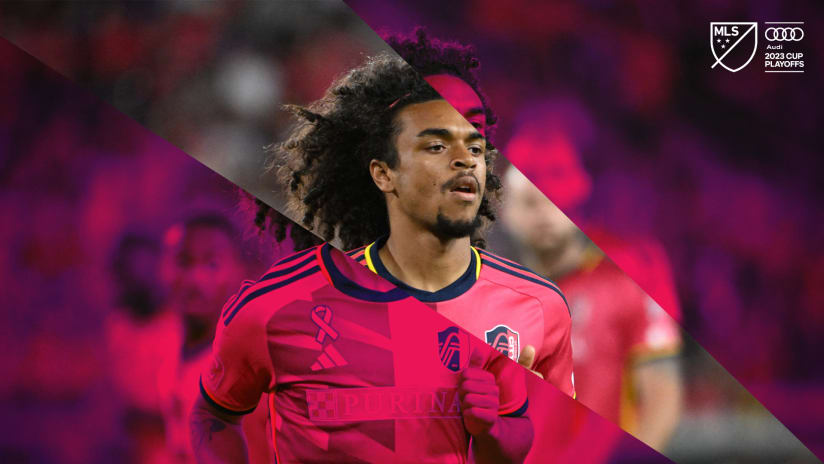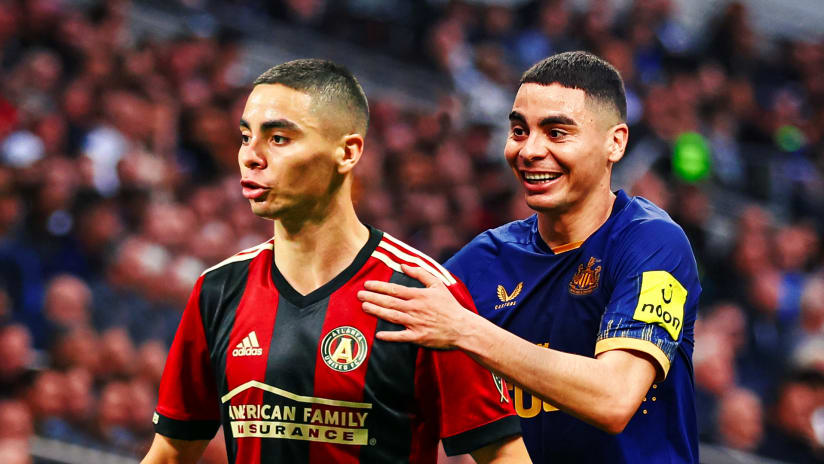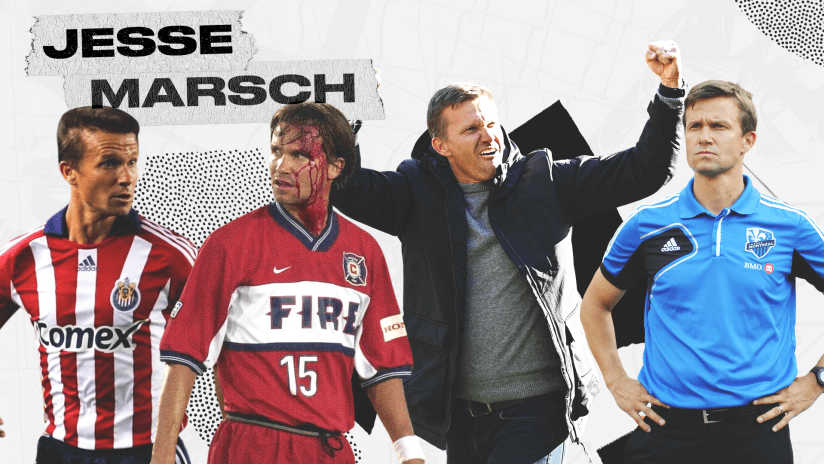THE WORD is MLSsoccer.com's regular long-form series focusing on the biggest topics and most intriguing personalities in North American soccer. This week, MLSsoccer.com contributing editor Sam Stejskal digs into the story of a one-time USYNT phenom who's had to take the road less traveled to pro success.
Dale Schilly felt like he was in a commercial.
A 10-year-old boy was dominating in his first practice session with Schilly’s youth club, Metro United, so the coach called for a water break, buying himself some time to figure out what he could possibly do to challenge the prodigy. But, as his teammates ran to the bench, the precocious youngster hung back, ball at his feet.
“Hey coach, watch this,” he said.
The kid hit the ball with his heel, bouncing it off of his other foot and up into the air. He juggled eight or nine times, catching the ball on the back of his neck, rolling it back to Schilly, smiling and jogging to the sidelines for a drink.
Throw in a carefully framed shot of the kid’s soccer shoes, maybe a close-up of his sports drink and a catchy tagline, and you’ve got yourself an ad campaign.
You’ve also got the beginning of Charles Renken’s soccer story.
“I’ll never forget [that first practice] as long as I live,” said Schilly, now the head coach of USL club Saint Louis FC.
“It was classic. It was like a commercial. He was just light years ahead of everybody. He had God-given gifts. There wasn’t much to do with him, he was just better than everybody.”
That was 2003. Renken had just moved from Zambia to Edwardsville, Ill., a town of nearly 25,000 people about 20 miles northeast of St. Louis. He had settled with Seth and Pamela Renken, who were welcoming Charles and two of his brothers to their home two years after formally adopting their brother Richard.
Charles immediately stood out on the soccer field, starring for local clubs – first for Metro United and then area power St. Louis Scott Gallagher – before making his way in 2007 to the US Under-17 national team residency program in Bradenton, Fla.
He was 13, and he was as can’t-miss as they come.
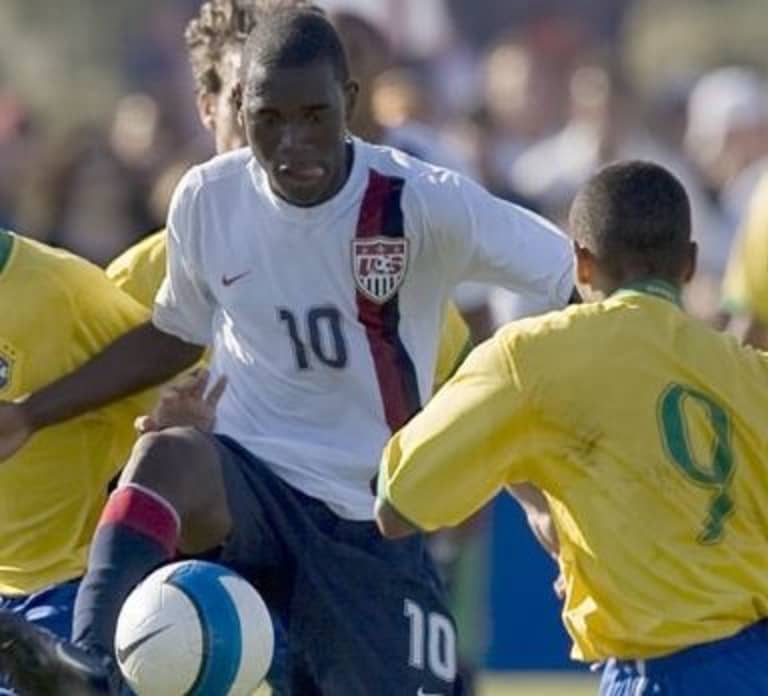
Renken played "up" two years into the 1991 age group, even though he was born in December of 1993. He put on a particularly compelling display against the Brazil U-17s in the 2007 Nike International Friendlies - 11 days before his 14th birthday. (Timbers.com)
After just a few months in Bradenton, the midfielder had already earned a call to a US U-20 camp and dominated for the U-17s in a 2-0 win against Brazil in the Nike Friendlies. Reports surfaced claiming virtually every club in the English Premier League were interested. Trials were arranged at Arsenal and Reading in England and 1860 Munich in Germany. Articles with titles like “Renken the next big thing for US Soccer” were published. Message boards blew up.
“First impression of Charles was one of skepticism,” said Orlando City SC midfielder Amobi Okugo, who attended the residency program with Renken in 2007. “To hear about this random young African kid supposedly being the next Freddy Adu, everyone was anxious and interested to see what this guy was all about. But once we met Charles that quickly changed. He is one of the nicest, most polite kids I’ve ever come across. Once everyone heard how high-pitched his voice was he was treated like a little brother.
“On the field, he was never out of place. To be honest he was probably top three when it came to technical ability with our ‘91 age group and he's only a [‘93]. We would play the ‘90s in scrimmages and it didn't matter how physical they tried to be, he wouldn't react mainly because they couldn't touch him. He was the real deal.”
An American soccer culture so desperate to reach the Promised Land had anointed its latest savior. The only question: When, not if, would he start to contribute to the full national team?
“I saw a very young, gifted player in midfield that played tactically beyond his years and was technically very, very sound,” said Tampa Bay Rowdies head coach Thomas Rongen, the longtime US U-20 manager who called Renken to a camp in Argentina in May 2007.
“Just on talent level alone, I thought that this guy is going to be an exceptional player. A guy that could help an MLS team and eventually could play for our senior national team.”
*

Courtesy of Seth Renken
*
Eight years later, and Renken is a long way from those bright lights.
Now 21, he’s back in Edwardsville, living at home and playing under Schilly at first-year St. Louis FC. He isn’t supposed to be here. We – the American soccer public, forever looking for our breakthrough star – expected him to be a significant first-division player by now. A shoo-in for the Gold Cup preliminary roster that his former residency teammates Brek Shea, Juan Agudelo, Perry Kitchen and Greg Garza were recently named to by Jurgen Klinsmann.
But injuries – he tore the ACL in his right knee twice, first in January 2008 and again in March 2009 – seemed to rob him of his quickness and derailed his fledgling career at Bundesliga side Hoffenheim. When healthy, he appeared regularly for the club’s U-19 squad but never managed to break into the first team in two years in Germany.
Searching for regular senior-team playing time, he chose to leave Hoffenheim in 2011, eventually landing with the Portland Timbers ahead of the 2012 MLS season. It was the start of a three-year odyssey in which Renken failed to make any first-division appearances, taking him from Portland in 2012 to an amateur club in the Swedish sixth division in 2013 and back to the US in 2014, where he played 44 minutes with USL club Arizona United before being cut last August.
“When I was in Sweden and when I was in Arizona, I would ask myself, ‘How did I get to this place?’” Renken said. “I was like man, it’s difficult right now.”
The two years in Sweden and Arizona were rock bottom for Renken, who justifiably wondered if his career would ever get on track. He’d fallen off the face of the soccer earth, unable to get a chance in a professional league.
That could’ve been it for him. Instead of the talented kid made good, he was now the prodigy gone bad. Injuries, false hopes and the cruelty of the soccer gods had seemingly written his final chapter before he was old enough to even have a drink.
Charles Renken wasn’t a star. He was a cautionary tale.
But Renken, who returned to Edwardsville and trained with the Scott Gallagher U-18s after being cut by Arizona, had a lifeline. St. Louis was awarded a USL franchise last May and immediately put Schilly in charge. Eleven years after their first encounter, Renken reached out to his former coach via text, setting the wheels in motion for him to sign with the club in January.
Now, after years of twisting in the wind, Renken is getting an extended run of games for the first time in his pro career, flashing some of the talent that made him such a star on the youth level. He’s appeared in 13 of Saint Louis’s USL contests, helping the expansion side contend for a playoff spot in the league’s Eastern Conference.
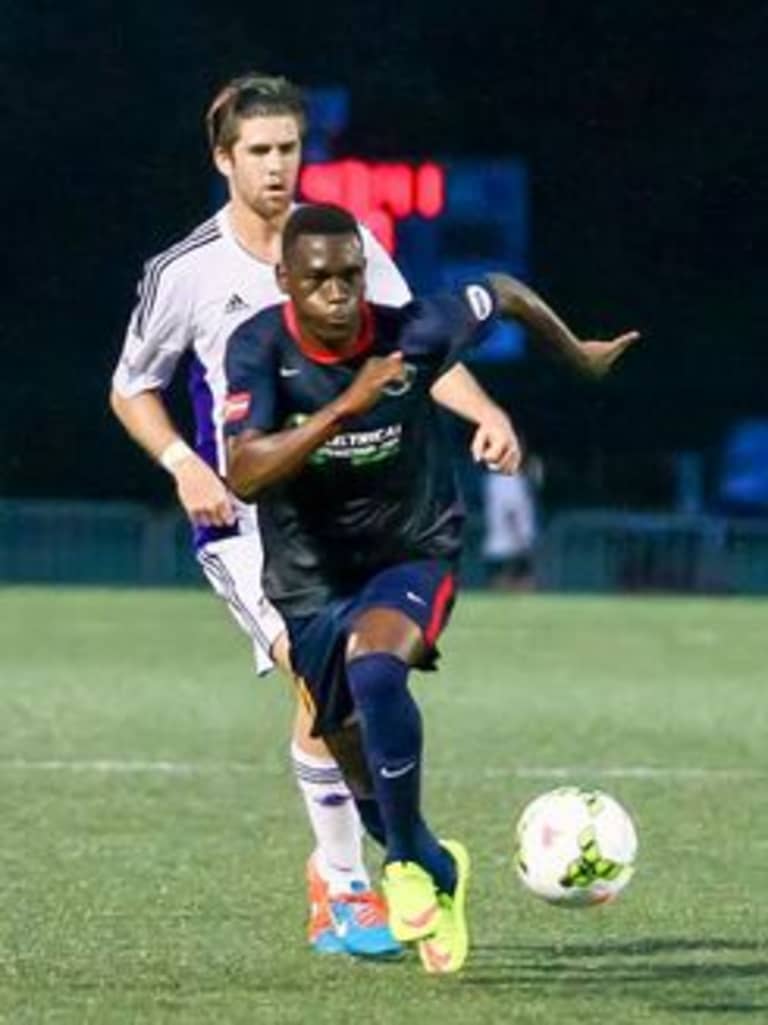
Renken has found a role with St. Louis FC as a late-game sparkplug. Veteran Brandon Barklage calls him "one of the key factors on our team." (Mark Guthrel & St. Louis FC)
He also contributed to STL FC’s US Open Cup run, drawing a penalty kick to set up the 80th minute equalizer in the club’s shootout win over NASL club Minnesota United FC in the third-round, and coming in off the bench in the team’s 1-0 loss at Sporting Kansas City on June 16.
“For us at Saint Louis, he’s actually been one of the key factors for our team,” said defender Brandon Barklage, who spent six seasons in MLS – starting 20 games for the 2013 Supporters’ Shield champion New York Red Bulls – before joining his hometown STL FC this winter. “If you bring him on in the 70th, 75th minute, and the wingbacks are starting to wear down a little bit, he’s an absolute beast. He’s been the deciding factor in a few of our games; he’s gotten us a few wins and a few results just because of his technical and individual ability.”
Most notably, Renken recently tallied his first professional goal, taking down a long ball with a delicate first touch, then firing home from inside the box to equalize in Saint Louis’s 1-1 draw at Louisville on May 30. Two weeks later, he got his first professional assist with a pinpoint cross on STL FC’s equalizer in their tie against Harrisburg.
“It’s amazing; it’s the best thing,” Renken said of his experience with Saint Louis. “I’ve had a tough run, but I kind of feel now that something good has finally happened.
“When I scored, I really couldn’t believe it,” he added. “It was just so exciting. To get that first pro goal, get it out of the way, now I can focus on getting more.”
Of course, Renken still has plenty of work to do. He’s only 21, and like most young players, he struggles with consistency. He’s a part-time starter, not a star, and he needs to improve the defensive side of his game and his tactical awareness to crack the lineup every week.
Still, he has the ability to amaze.
“Let’s say that in a session, your worst moment you could have would be a 1, and your top moment would be a 10,” Schilly said. “The normal player, your bottom moment is probably a 4 and your top moment is a 6. Charles’s might be a 3 and an 11. The 11 doesn’t happen as much as the 5, but when it happens, man, when it happens, you’re just wowed.
“I remember in one of his first sessions, we were doing a 4-v-4 game or a 3-v-3 game or something, and Charles pulled a move out. I remember the look on Barklage’s face. He wasn’t in the game at the time, but he kind of looked at it with an eyebrow raised, like, ‘Where did that come from?’ Even the players see it.
“But that’s part of the issue for Charles. He’s got to figure out not how to be an 11 every minute of every game, but how to be a 7 every minute of every game and an 11 every now and again.”
That Renken even has this shot is a testament to the growing North American soccer pyramid. STL FC is one of 13 first-year teams in the USL in 2015, and there was one more added in the second-division NASL. The growing number of lower-league options allow players like Renken – who may not have had an opportunity at their first, second or even third stops – more chances to flourish on the pro level, with the idea of graduating them to MLS and other first-division leagues.
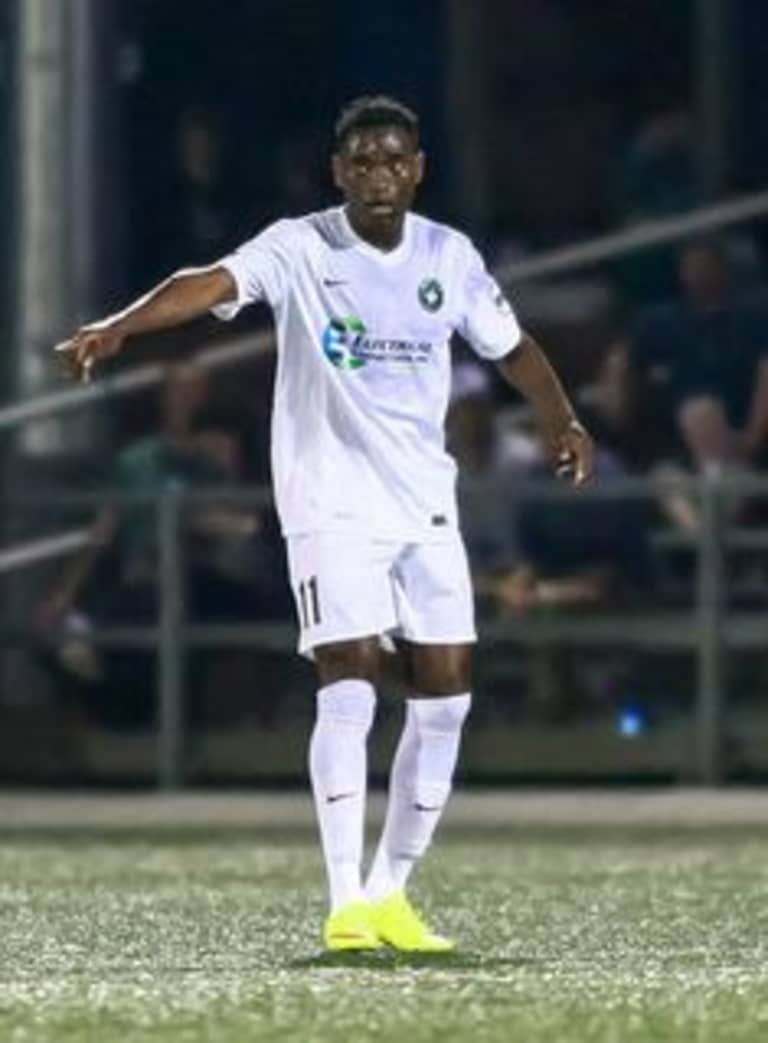
Renken may not have turned into a savior - but he's turned into a good pro thanks to the opportunity afforded by the expansion of the US Soccer Pyramid at the second-tier NASL and third-tier USL. (Mark Guthrel & St. Louis FC)
“Think about guys three years ago that were the 24th or 25th guy on an MLS roster and what they were getting in terms of meaningful competitive matches,” Schilly said. “Regardless of what the level of USL is, regardless of what people think it is, you’re playing games against good teams with coaches that care about their teams, care about their performance and the teams are organized. You’re playing in front of five, six, seven thousand people. It’s not 20,000, but there’s still people, there’s still supporters there, and the pressure to win is still there.
“Those players that were [roster spots] 23 through 29 on the MLS roster, those guys need these games to get better. I just can’t, I can’t imagine not having the structure that’s in place. I know it wasn’t even there a year ago, but just looking at it now, it’s just so important for these players to have.”
“That hierarchy, that pyramid just needs to be there," Rongen added, striking the same chord. "I think it’s very, very good. It gives the Charles Renkens of the world an opportunity to play on a daily basis. They can get 90 minutes in a very competitive environment, and that’s great.”
While Renken is enjoying his time with Saint Louis, he isn’t quite content to stay there. Both he and Schilly would like for him to move up to MLS at some point, with Renken aiming to get back into the league next season.
“There’s enough talent; he’s got the desire to get there,” Schilly said. “There’s some things he’s got to change, some things he’s got to get better at, but if you find that right match, it can happen, and it can happen as easily as the right guy watching him at the right time and giving him a chance. It could be as simple as that. It might not even take a full season. It might take one game where a guy sees him and says, ‘Whoa, that’s his ceiling? We can work with that that.’”
Renken knows what expectations were placed on him, and he knows he hasn’t hit them. But this isn’t a story about a failed prospect, nor is it one about a burned-out has-been. Renken isn’t in MLS, hasn’t starred in any commercials and certainly won’t be at the Gold Cup, but he’s young and still developing, taking advantage of a chance in a competitive environment with a coach who believes in him, finally able to show some of the potential that dazzled so many a few short years ago.
He is a pro, and is turning into a good one. Now he’s looking for just a little bit extra.
“A lot of times I wasn’t too happy about how things were going, but at the same time I would think, 'Tomorrow is another day; things will get better,'” Renken said. “A lot of the times were hard, but in order to succeed, you have to go through hurdles, and then you have to look at those hurdles not as a setback, but as something that can help you get better. That’s how I tried to look at it. Even now, that’s how I look at it.
“I think the combination of everything has helped me do good here, but I would like to do great, and do more.”

